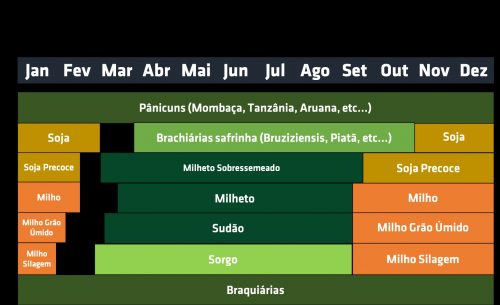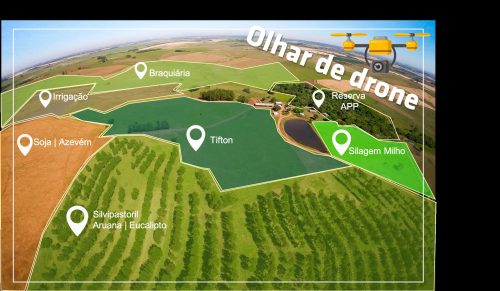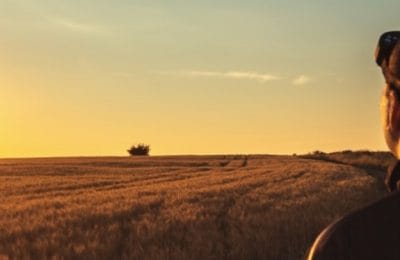
When the end of a season of the year ends and a new one begins, for the vast majority of livestock farmers a moment of great uncertainty also begins, especially in autumn for properties in the southern region of the country and the end of the waters in Central Brazil. Some years it rains too much or there is an unprecedented drought, others it gets cold earlier, running the risk of frosts in April (more from Paraná down). In the center of the country, we never know if the rain will stop in April, May or with a lot of help in June. There are always those doubts: should I invest at this time? What is really worth it? Which category do I treat best and who do I “fasten the belt”? Supplementation or confinement, who to provide and for how long? Questions that really aren’t simple to answer. We are very sorry to inform you: there is no easy path, magic formula or ready-made recipe. However, we will try to explain in the paragraphs below a logic of reasoning, which we believe will help you answer most of these questions, regardless of whether your business is beef, dairy or sheep.
You always need to have a plan A, B, C and even D
Unlike other “short shot” crops, such as soybeans or corn, where the growth cycle takes place within practically the same season of the year (a cycle that normally lasts around 120 days), livestock farming has a very short production cycle. longer, which in most beef cattle business models, for example, exceeds 12 months. This is inherent to the business and, with all the bad weather we have throughout the year, there’s that cliché phrase: no year is the same and you need to have good planning, with plans A, B, C and even D ( if necessary), to go unharmed and try to maintain a good profit margin when selling your product. Be it calf, garrote, fat ox, fat cow, milk, wool and others.
To make more profit, you cannot miss pasture in your planning
When we talk about profitability, one thing that we must have in our planning is a good forage distribution. We are talking about plants for grazing, preferably green leaves, throughout the year on the property. We know that this is more the reality of those in the south of Brazil and in the Cerrado region this is practically impossible to achieve. In this case, we need a good supply of forage throughout the dry season, that is, the food base is pasture. Feed from grazing has a very strong economic force that acts on ruminant production systems. One of the biggest production costs is animal feed (around 60%) and there is nothing cheaper than pasture as the main food source. Furthermore, herbivores are native to pastoral environments, they do this masterfully, it is up to us to use this competitive advantage intelligently.

Figure 1. Example of forage distribution throughout the year in tropical Brazil in a crop-livestock integration system.
Having a defined business model is a matter of survival
Another very important thing is to define your business model well. Know exactly what your farm produces, what is its main product to be sold, whether it is calves, garrotes, pregnant cows, beef cattle and so on. Logically, a farm that produces calves also sells cull cows, but the main business is the production of calves. Note that there is a range of different livestock business models (we only mention the main ones). And for good planning to be successful in its execution, the business model has to be well defined. It must be a full cycle system (selling fat cattle), firstly for the simple fact that if the price of calves is good, the decision to sell the calves at weaning, instead of selling fat cattle the following year, has a positive impact the cashier at first. However, it results in a loss of overall efficiency, as straight away we can tell that more cows could be exposed to reproduction. Secondly, if the system is well adjusted and prepared for fattening, the animals remaining on the property would certainly generate more results than the momentary inflow of money from that sale.
Every business goes through turbulence, good and bad years, the important thing is to take the firm and right steps in the chosen business model and not “jump from one branch to another”. If you have doubts about your production system, do an exercise, seek help and define this as soon as possible, this decision is essential to reap good results. For this definition, a tip we always give: more “rustic” systems, with limited potential for intensification, sandier areas (such as the Caiuá sandstone in Paraná), flooded areas (such as the Pantanal), subject to droughts in the summer (such as the Pampa Gaúcho) or very steep areas (such as the west of Santa Catarina), these areas are much more suitable for working with breeding or full-cycle cows. Obviously, you can work with other systems, such as breeding and finishing, but they are much more challenging and require more professionalism. Areas that are less sensitive to climatic stress, fertile soils and that have the possibility of producing abundant quality food are more interesting rearing and finishing systems in these cases.
Food in quantity and quality, for whom?
Having said that, it’s time to quantify and qualify the demand for food. Know with good precision how many animals, what their category is (e.g. cow with calf at foot, primiparous, weaned calf) and what their weight will be throughout the year on the property. This is important to know, as we can define what the herd’s food demand will be throughout the year, in quantity and quality. As a general rule, animals consume in proportion to their live weight, a cattle, for example, consumes an average of 2.2% of its weight in dry matter (food removing the amount of water).
This means that a 300kg heifer consumes approximately 6.6kg of dry matter per day. The heavier the animal, the more it consumes, which is why it is important to know its average weight throughout the seasons. However, this consumption demand varies throughout the year and category. A cow with calves at its feet has to consume not only to maintain itself, but also to produce milk and have nutrients left over for reproduction, so at this stage it is quite common for its consumption to exceed 3% of its live weight. When she weans the calf, the demand for nutrients drops (she no longer needs to produce milk) and her consumption returns to close to 2%.
Another important thing is to provide quality food for demanding categories, growing animals such as calves, heifers and primiparous animals. These are always the most demanding categories, in addition to maintaining themselves, they need nutrients for growth. Therefore, in addition to quantity, these categories need quality, each kg of dry matter ingested has to be dense in nutrients to meet their demands and this can only be achieved by consuming green leaves and, if necessary, using strategic supplementation.
Time to close the accounts
Once you get here, it’s time to check the availability of food on the property and whether it meets the herd’s demands in quantity and quality throughout the year. At this stage it is important to have what we call a “drone view”, which is to imagine looking at the property as if you were flying over the different seasons. If you don’t already have one, make a map of your property and quantify the animal load that each area supports and whether the quality pasture areas meet the most demanding categories at the time they need it most. If this is not met, fertilizing some or all areas can meet these demands. If this is still not possible, we can use supplementation, but this could already be an indication that perhaps your property has too many animals, is overcrowded and the potential return of the business is already compromised.

Finally, after quantifying forage demand and fitting it into food production throughout the year, it’s time to put financial numbers on all of this. There is no point in creating the most beautiful technical project in the world and implementing something that will cause losses (no one is crazy enough to do that, right?). We need to know the estimated revenue from the sale of animals and how much the expected expenses are, taking into account mainly disbursements for fertilization, supplementation, health, mineralization, reproduction, etc.
Other costs cannot be left out either, such as labor, infrastructure maintenance (fences, sheds), financial commitments (funding installments, investments in machines and animals). Attention! Don’t forget to include a margin of error, such as “unforeseen expenses” and avoid unpleasant surprises during execution. Then, we can evaluate the result of the operation and the rate of return on investment. Projects with a return margin above 15 to 20% are very ripe to be put into practice. If you do not reach these values, without planning you will need adjustments.
Let’s do it differently!
If you’ve made it this far, you’ve already realized that livestock business models are not simple at all, and that’s exactly what it is. To have an efficient livestock system that delivers results, you need a lot of planning and a lot of organization in terms of execution capacity to put all of this into practice, something very rare to see in Brazil abroad. This is one of the big reasons why the properties we see out there work below their capacity, don’t deliver the results they are capable of delivering and most of them don’t pay the bills, on the other hand, there is a lot to be done, enhanced. Livestock business models have a great capacity to generate results with economic resilience. By planning your systems following the logic above, applying more professional management, managing the pastures well, you will be much more prepared to calmly overcome the difficulties that will arise, whether due to changes in season or the ups and downs of the market. ox.
SEE ALSO: The full video on the topic “New season arriving and the cattle? Where are they going?”, with experts on the subject, SIA’s technical consultants: Armindo Barth Neto and Paulo Cardozo Vieira.
Here: https://bit.ly/SIAnoYoutube
Text: Armindo Barth Neto
Business and Relationship Consultant and Coordinator – SIA
Images: SIA Image Bank



